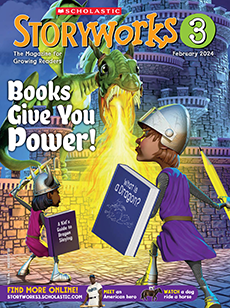Science History Images/Alamy Stock Photo
Let’s go back in time. You’re a kid living in Boston in 1880. It’s a hot summer day. What should you and your friends do? You could play baseball in an alley with an old broomstick. You could play tag in an empty lot.
But be careful! Horses pulling a carriage could speed around the corner. Smelly piles of garbage could make you sick. Oh, and there are rats everywhere.
You might be thinking: This doesn’t sound like fun. But there’s nowhere else to play. That’s because playgrounds don’t exist yet.
But that’s about to change. And when it does, being a kid will never be the same.
Let’s go back in time. You’re a kid living in Boston in 1880. It’s a hot summer day. What should you and your friends do? You could play baseball in an alley with an old broomstick. You could play tag in an empty lot.
But be careful! Carriages pulled by horses might run by. Smelly piles of garbage might make you sick. And there are rats everywhere.
You might be thinking that this doesn’t sound like fun. But there’s nowhere else to play. That’s because there are no playgrounds.
But that’s about to change. And when it does, being a kid will never be the same.

